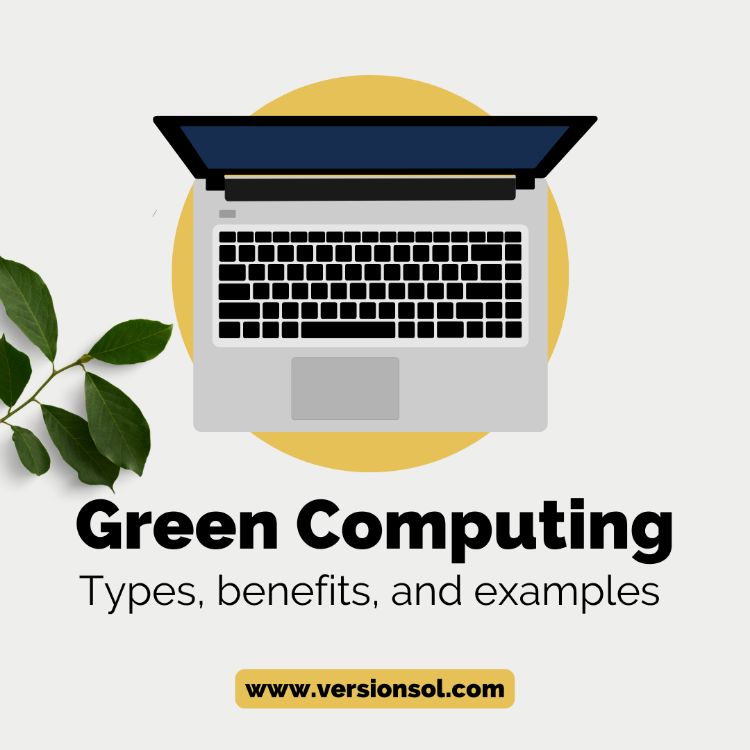How much power does the computer consume? Most likely not, but if you do some research to find out, you’ll understand how important green computing is. In fact, you will also value the concept of green computing if you are aware of how much room outdated computers occupy in dumps and how challenging it is to get rid of them. Recycling computers is more important than ever before these times, and everyone must do their part to maintain a clean environment. It’s crucial to gain some knowledge about environmental preservation and computer disposal so you can do your part to safeguard the environment. Green computing generally refers to the effective use of technology and computers.

3 reasons to switch to green computing
People frequently express fear while considering upgrading to more ecologically friendly technologies. In fact, many people believe that upgrading the office to a green computing alternative will be expensive and that upgrading outdated machines will be expensive. Although it’s not a given that this is the case, the fact that so many people have that belief makes the change in the IT industry difficult. This does not have to be the fact; everyone should and may adopt a more environmentally friendly way of life for less money than was previously thought.
Improvement
The first benefit of looking into green computing is that a clean CPU operates more quickly. Even though it may seem self-serving, this is the ideal option for a person who wants to upgrade current computers while keeping them out of the trash. Simply open the box and clear out the dust, and other accumulations within the tower or laptop. By getting rid of these undesirable elements, a computer will function more quickly and resist the need to be thrown away longer.
Portable machines
Technology has now overtaken the huge tower, which is the third incentive to investigate green computing. This refers to desktop computers when discussing towers. With ease, laptop technology has advanced to a level that rivals or even exceeds that of desktops. Because laptops are more energy-efficient and powerful than most desktop computers, individuals won’t need to spend as much electricity.
Give or sell
The simplest reason to start using green computing is recycling. For a little cost, anyone can sell the machine to someone else or a material recovery firm.
Green computing advantages
In its most basic form, green computing lessens the environmental impact of technology. This calls for energy conservation, loss reduction, and promotion of long-term viability. Lowering the carbon emissions of the information systems and systems sector and its associated enterprises is the goal of green computing. The two main methods used in green computing are energy efficiency and electronic waste. Reduced resource use and energy efficiency (servers, peripherals, and CPUs all use less energy). E-waste refers to electronic garbage disposed of properly. This technology is advantageous since it:
- Reduce the amount of energy used by computing resources during the busiest times.
- Conserve energy when operating inactively
- Utilize green energy sources and lessen the negative consequences of your computer resources
- reduce wasteful computing
Types of Green Computing
Different technologies exist nowadays. Below we discuss some types of green computing in details. Continue reading to learn more.
Sun-Powered System
In this strategy, specialists make use of the sun’s energy to generate solar power for residential and commercial use. top countries like Canada and China are leading the way in the use of this innovation. A fantastic accomplishment for green technology. Solar pv cells are the most miraculous example of green computing since they convert electrical power into electrical energy so simply.
Wind Turbine Initiative
Another excellent type is wind energy technology, which enables everyone to produce electricity. Wind turbines have no negative environmental effects after being embedded.
Thermal Energy
Another unique form of green technology is this. Consumers can produce power with the aid of this geothermal power station and use it for everyday tasks like home air conditioning and heating.
Conclusion
The term “green technology” refers to a wide range of topics. from the study of cutting-edge materials to be used in our daily lives to innovative methods for generating energy. It has made it its mission to meet society’s demands without causing harm to or depleting natural resources. This mostly entails developing entirely recycled material, lowering waste, putting forth innovative technology in numerous industries, and establishing a hub of business growth around environmentally friendly technologies. It is clear why firms are looking into green computing choices with such a serious interest throughout the IT industry given that green IT projects are exhibiting basic economic and ecological reasoning.